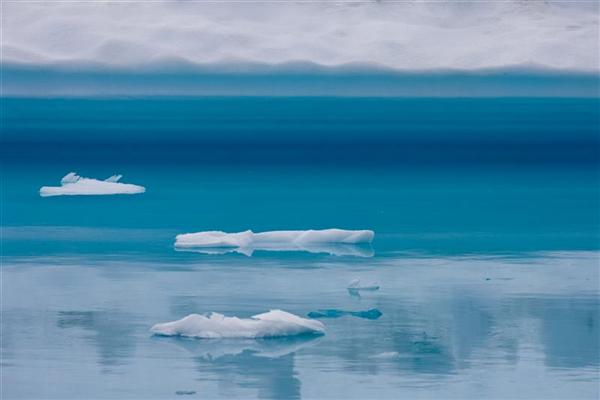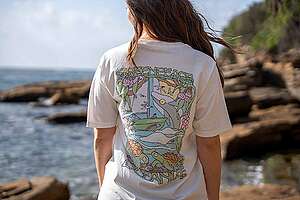Two of the scientists travelling with Greenpeace on the Arctic Sunrise are Dr Julienne Stroeve, a research scientist at the US National Snow and Ice Data Centre (NSIDC), and Nick Toberg, an ice scientist at Cambridge University. I asked them what research they would be able to do on the ice, and for some insight into why Arctic sea ice is so important, and what impact the melting would have on our climate.
Blogpost by Sune Scheller

© Nick Cobbing / Greenpeace
What will you be doing on the ice?
Julienne: I’ll be measuring ice thickness – it’s a more important measure than ice extent as it tells you about volume (total) loss. I can measure thickness in different spots by drilling with a hand augur, which can go two metres deep. I also hope to look at snow thickness, whether there are melt pools on the ice and whether they are frozen. As the ship is travelling we will also measure the ocean temperatures.
Nick: We will test impact of ocean waves as they hit the ice edge, using buoys fitted with accelerometers. This will fill in the missing physics of how the strength of the waves adds to the ice breaking up and melting. Broken ice reflects sunlight less well as the sun’s rays are
absorbed into the ocean beneath. The lack of ice creates even stronger waves which break the ice up more the following year.
What is happening to the sea ice this year?
Julienne: This year the ice edge has pulled back significantly – in some places by hundreds of miles. By June, the ice edge had pulled back to where it would usually be at the end of September (just after the minimum) in some places. It reached its lowest point ever – 3.51 million sq. km and is still melting.
Why is this year so different, has it been particularly warm, like in 2007 (when the previous record was set)?
Julienne: I’m quite amazed by the level of melting this year, as we knew the ice was getting thinner but hadn’t realised by how much. This year the weather was not particularly warm or conducive to melting. So it must be because the ice is very thin. As more thick ice melts, it is being replaced with first year ice which is much thinner, so the fast melting will continue every year now. I really think, if this year we’d had the weather patterns of 2007, the sea ice extent would be below 3 million sq. km.
Nick: In 2007 the weather conditions were right for the ice to shrink. Last year [2011] there were no unusual weather conditions but the ice came close to beating the 2007 minimum. Due to previous melting, the sun’s rays which used to be reflected by the ice, have been absorbed into the oceans, heating up them up. So once this pre-conditioning is there, the long-term trend is towards increased melting. We’ll see ice free summers in all of our lifetimes.
What are the different functions of ice thickness (volume), and ice extent (surface area)?
Julienne: Well, ice extent is important for reflecting the sun’s rays and keeping the atmosphere cool. But if we lose ice volume, the ice becomes very thin and melts more easily. The decrease in thickness is why we are losing so much surface area of the ice. Thickness also affects polar bears as they cannot hunt on thin ice, they will just fall through.
As surface area continues to shrink how is melting affected?
Julienne: The heat which was previously reflected by the ice is now mostly absorbed by the ocean; but in autumn when the ice begins to refreeze the heat is absorbed by atmosphere, leading to more clouds and greater moisture in the atmosphere. More clouds in autumn and winter actually keep the atmosphere even warmer. This pushes heat back down to the ocean’s surface, accelerating the ice loss.
How do we know the melting is caused by human activities?
Julienne: We know the heating is caused by humans, by measuring the carbon in the atmosphere and tracing where the carbon is coming from; there is a difference between natural carbon in the atmosphere and carbon from burning fossil fuels. It is hard to differentiate between natural warming and that caused by human activity. But when you create models and leave out the human caused CO2 levels in the atmosphere, none
of the models show this level of warming. Based on new climate models, a paper I have just published in Geophysical Research Letters [August 2012] estimates that 60% of the rate of decline in summer sea ice extent is due to human activities.
Nick: Arctic sea ice extent has gone down 10% per decade since the 1970s. The Arctic has had very substantial ice cover for the last 13 million years (shown by recent research on sediments). When it has reduced as a result of natural cycles it has done so over tens of
thousands of years. What is significant now is the speed with which sea ice cover is reducing.
What is the long term picture?
Nick: If the remaining 4 million sq. km of sea ice disappear in summer, that would equal adding 20 years’ worth of CO2 to the atmosphere (at today’s levels of CO2 emissions). In the 1970s we had 8 million sq. km of summer sea ice, so it has halved in the last 30 years.
Julienne: If we keep warming the atmosphere, the Arctic could be ice free in the summer by 2030. While natural climate variability could increase ice levels for a few years, it is on a downward long term trend. We have entered a new climate state in the Arctic – a new year
round warmer era.
This year is significant – we’re on the extreme end of current climate models. Our observation is that sea ice decline is happening much faster than most of the new IPCC models.
What are the impacts on areas of the world beyond the Arctic?
Nick: The ice is a big cooling system and the earth’s weather patterns depend on it. There will not be the same dispersion of cold and heat – for example, warm water currents will not move past Britain any more – making it less temperate. Britain is actually at the same latitude as Siberia and is made warmer by the North Atlantic current.
Julienne: The Arctic drives Northern Hemisphere weather patterns. Open water absorbs heat, which is transferred into the atmosphere, making the atmosphere warmer. This alters the movement of air, which changes the jet stream. The wind speed becomes slower, extreme weather conditions stay longer, producing drought conditions in the US for example. It is very early to be sure of this, but it does make physical sense.
How do you think the world will respond?
Nick: It’s disturbing that we have changed the face of the planet in a way we can visually see. But people won’t really change until it affects them on a day to day level.
Julienne: I hope that this year’s sea ice loss will have an impact on the US government and change thinking.

